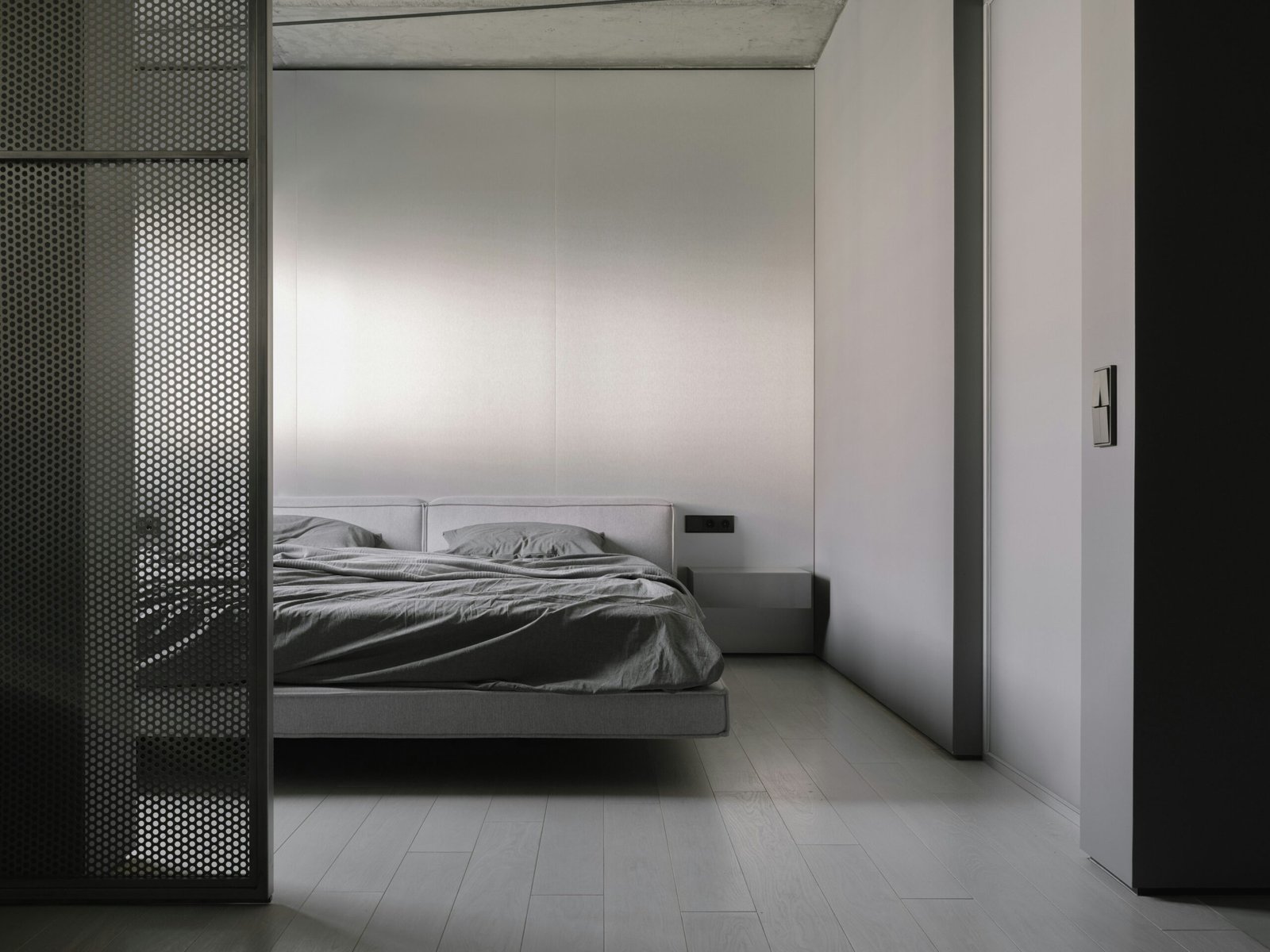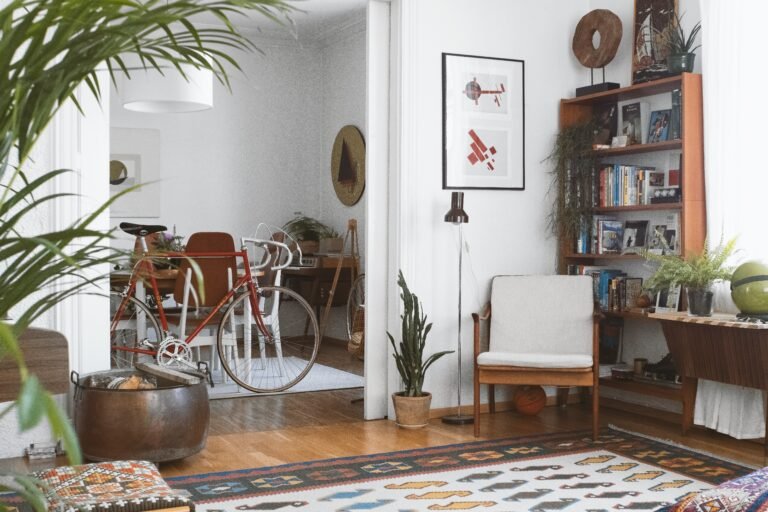Minimalism is more than just an aesthetic—it’s a lifestyle choice that focuses on simplicity, functionality, and intentionality. In interior design, minimalism emphasizes clean lines, open spaces, and the careful curation of items, leading to a home that is both calming and highly functional. By removing excess and focusing on what truly matters, minimalism fosters an environment that enhances mental clarity, reduces stress, and creates a space where each element serves a clear purpose.
A minimalist home is not about deprivation but about creating a space that feels open, organized, and free from unnecessary distractions. Whether you’re looking to declutter your home, embrace a more mindful way of living, or design a space that promotes relaxation, this guide will help you achieve a beautifully designed, clutter-free environment that aligns with the principles of minimalism.
1. The Principles of Minimalist Design
Before incorporating minimalism into your home, it’s essential to understand the core principles that define this approach to design. Minimalist spaces are curated carefully to enhance functionality while maintaining aesthetic appeal.
1.1 Less is More
Minimalist interiors focus on quality over quantity. Every piece of furniture or decor should serve a purpose, whether functional or aesthetic. Instead of filling a room with excess items, minimalism encourages intentional selection—keeping only what adds value to the space. By reducing clutter and unnecessary items, you create an environment where the remaining pieces stand out and contribute to the overall harmony of the room.
1.2 Clean Lines and Simplicity
Minimalist design embraces straight lines, uncluttered surfaces, and a neutral color palette. Simplicity is key—furniture should have a purpose, and decorations should be kept to a minimum to avoid visual clutter. This simplicity creates an effortlessly chic and sophisticated look that enhances a sense of calm and order.
1.3 Open and Airy Spaces
Clutter-free spaces create a sense of openness and tranquility. Minimalist rooms often feature open layouts, light color schemes, and strategic furniture placement to maximize the feeling of spaciousness. Removing excessive furniture and opting for multi-functional pieces can further enhance this open atmosphere, making your home feel bigger and brighter.
1.4 Functionality is Key
Every item in a minimalist home should have a clear function. Multi-purpose furniture, clever storage solutions, and hidden compartments help maintain a tidy, clutter-free environment while keeping everyday essentials easily accessible. This principle ensures that your space remains practical and efficient without sacrificing style.
1.5 Natural Light and Neutral Colors
Minimalist design heavily relies on natural light to enhance the feeling of openness. A neutral color palette, often dominated by whites, grays, and earth tones, provides a sense of calm and order while allowing key design elements to stand out. Soft, diffused lighting and large windows further contribute to a peaceful and refreshing atmosphere.
By incorporating these principles, you can create a home that feels serene, clutter-free, and effortlessly stylish while promoting a stress-free lifestyle.
2. How to Apply Minimalism in Your Home
2.1 Declutter and Simplify
The first step toward a minimalist home is decluttering. Eliminate excess items that no longer serve a purpose or bring joy. Follow these steps:
- Use the “One-Year Rule”: If you haven’t used an item in the past year, consider donating or discarding it.
- Keep only what adds value: Ask yourself if each item contributes to your daily life or overall well-being.
- Create designated storage spaces: Keep necessary items organized and hidden from sight to maintain a clean aesthetic.
- Adopt a “one in, one out” rule: Every time you buy something new, remove an old item to prevent accumulation.
2.2 Choose a Neutral Color Palette
Minimalist interiors often feature soft, muted colors that create a calming atmosphere. The most popular minimalist color schemes include:
- White and off-white: Promotes brightness and a sense of cleanliness.
- Gray and taupe: Adds warmth without overwhelming the space.
- Earthy tones: Soft greens, beiges, and light browns bring nature indoors.
- Black accents: Used sparingly, black adds contrast and sophistication to a minimalist setting.
To add visual interest without clutter, use different textures like linen, wood, and stone.
2.3 Invest in Quality Over Quantity
Instead of filling your home with unnecessary decor, invest in a few high-quality pieces that stand out. Choose furniture and decor that are timeless, durable, and functional. Prioritize:
- Well-crafted furniture with clean lines.
- Multi-purpose items, like ottomans with storage or foldable tables.
- Statement pieces, such as a single large artwork instead of multiple small decorations.
2.4 Optimize Storage Solutions
Minimalist design doesn’t mean you have to get rid of everything—you just need smart storage solutions to keep things tidy. Consider:
- Built-in shelving to create seamless storage.
- Hidden storage compartments under beds or sofas.
- Minimalist organizers to keep kitchen and bathroom essentials in order.
- Floating shelves to maximize wall space while maintaining an uncluttered look.
2.5 Limit Decorative Elements
Minimalism embraces subtle and intentional decor. Instead of multiple small items, opt for:
- A single sculptural vase or carefully selected plant.
- A large framed artwork instead of a gallery wall.
- A statement lighting fixture to add interest without clutter.
Each decorative element should have a purpose and contribute to the overall aesthetic of simplicity and calmness.
3. Benefits of Minimalist Interior Design
✔ Reduces Stress: A clutter-free environment promotes mental clarity and relaxation by eliminating excess distractions.
✔ Saves Time: Less clutter means less time spent cleaning and organizing, allowing for a more efficient daily routine.
✔ Improves Focus: A simple, distraction-free space enhances concentration and productivity, making it ideal for work or creative pursuits.
✔ More Sustainable: Investing in fewer, higher-quality pieces reduces waste and overconsumption, making it an environmentally conscious lifestyle.
✔ Enhances Aesthetic Appeal: A well-curated space looks effortlessly stylish and timeless, ensuring long-lasting beauty in your home.
✔ Encourages Mindful Living: Minimalism promotes intentional decision-making, helping you prioritize what truly adds value to your life.
4. Final Thoughts: Embracing the Minimalist Mindset
Minimalism is more than just a design trend—it’s a way of living intentionally. By removing excess, embracing simplicity, and prioritizing function, you can create a home that feels both peaceful and beautifully curated.
Whether you’re starting small with one room or fully committing to a minimalist lifestyle, these principles will guide you in designing a clutter-free space that enhances well-being and comfort. Minimalism is about creating a home that serves you, rather than a home that you serve, leading to a more balanced and fulfilling life.
Alex is the creator of Homely Haven, a space dedicated to simple, stylish ideas for interiors and gardens alike. With a passion for cozy living rooms, inviting outdoor spaces, and practical DIY solutions, Alex shares tips and guides that help turn any house into a true home.
From budget-friendly decorating hacks to weekend garden projects, the goal is always the same: to inspire you to create spaces that feel personal, beautiful, and welcoming. When not writing, Alex is usually rearranging furniture, sketching new garden layouts, or exploring design trends for the next project.








